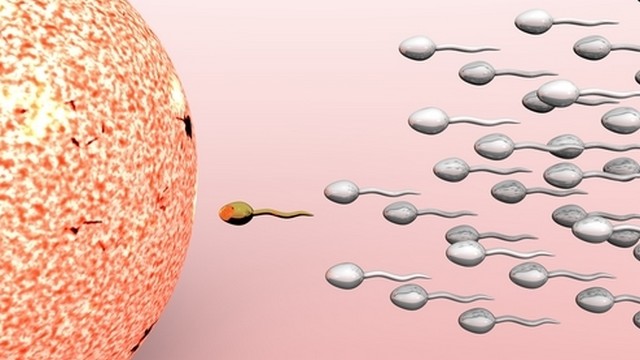How Close Are We to a Male Contraceptive?

Men are often portrayed as simple creatures in the media. According to contraceptive researchers, men are anything but uncomplicated. For decades, biologists have said they were ten years away from a male birth control pill. The problem in one sense is scale. While women only ovulate once a month, men produce sperm at a rate of 1,000 per second. Another consideration is the necessity of reversibility. Despite difficulties, several new options are on the horizon.
One of the most promising is what is being called as a “liquid vasectomy.” Vasalgel is a polymer that is injected into the vas deferens, two ducts which allow sperm to enter the semen before leaving the body. In an actual vasectomy these tubes are surgically snipped and tied off, or cauterized.
In this case, the polymer forms a semi-permeable barrier prohibiting sperm from getting through. Whereas with a real vasectomy, reversing the procedure is tricky and not guaranteed, all that has to happen with Vasalgel is an injection of baking soda to dissolve the polymer. This allows the sperm to enter the semen once again. The gel isn’t hormonal and is designed to last for years. It is minimally invasive, an outpatient procedure, and literally takes five minutes to complete. Two injections and it is over. There are no side effects.
This idea has been developed from a similar one known as RISUG (Reversible Inhibition of Sperm Under Guidance). RISUG is currently undergoing advanced clinical trials in India. Vasalgel has been shown to work in rabbits and lower primates, but is having some trouble in larger mammals, namely baboons. Researchers hope to overcome this sometime in 2016, and begin human trials soon after. If you are interested and cost concerns you, take heart. The executive director behind Vasalgel, Elaine Lissner, told Medical Daily, “It shouldn’t cost more than a flat screen TV.”
Learn more about Vasalgel here:
Though researchers have had decades of trouble with this issue, German inventor Clemens Bimek thought up a technique as simple as flipping a switch. 20 years ago, while watching a documentary on contraception, Bimek wondered if a simple valve might not solve the problem of male contraception. Though the many physicians he consulted didn’t take him seriously, the inventor plodded on. The result, the Bimek spermatic duct valve or Bimek SLV.
Here, a switch is surgically implanted into the scrotum that controls two valves, one attached to each vas deferens tubule. A man with this implant can push the toggle switch into the upward position to “turn off” the flow of sperm. Toggle the switch down and sperm begins flowing again. Trials are set to begin with 25 participants this year. The valve, less than an inch long, and weighing only a tenth of an ounce, is made of PEEK OPTIMA, a polymer already in use in other medical implants.
Each valve must be surgically implanted, a simple procedure that takes about a half an hour. There is some concern that attaching these could cause scar tissue in the vas deferens which may prevent sperm flow, even when the switch is flipped open. Another issue is if the valve becomes clogged over time, limiting sperm flow.
Learn more about the Bimek SLV here:
Bimek SLV – The New Contraception for Men from Bimek SLV on Vimeo.
Several options for a male birth control pill are in the works but each is in the, pun intended, seminal stages. One possibility is H2-Gamendazole. This is a medication taken orally that prevents sperm from maturing. So far animal tests have shown great results. Next up, human trials.
Another option is a form of vitamin A which prevents retinoic acid from forming, a key element in sperm production. Successful lab results at the University of Minnesota have been reported, but it has yet to be tested on animals. Eppin Pharma Inc. is developing a compound known as EP007, which prevents sperm from swimming and so reaching the egg. This would become a non-hormonal birth control pill for men. But it is too early to tell whether it is viable.
The last of is already in the works. But instead of a pill, it is a hormone-laced gel. The topical contains a combination of nestorone (a kind of progesterone) with testosterone. The gel suppresses sperm production and has been proven 91% effective. However, side effects in men included acne and weight gain. If women are exposed they may experience excessive body hair and acne. And exposing children can result in an early onset of puberty.
One final note, researchers at University of California, Berkeley have just uncovered the final mystery in human reproduction itself, how a sperm actually enters the egg. When it gets close, the egg releases a wave of progesterone which activates a receptor on the sperm’s tail. This causes it to swim vigorously. That strong whipping action allows it to reach the egg and cut through its protective covering. Biologist and researcher Melissa Miller called it the sperm’s “power kick.” If scientists could somehow find a way to block the sperm’s tail receptor, it would be unable to enter the egg. This discovery could lead to a future form of unisex birth control.
For more on the male birth control drugs:





